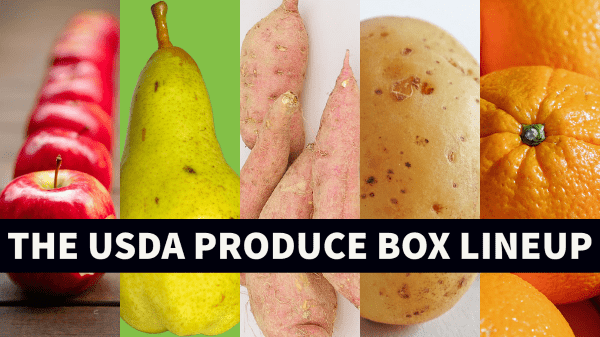USDA’s new Produce Box program, which it says is not designed to replace the Farmers to Families Food Box program, has a budget of about $20 million.
A USDA spokesperson said 41 state agencies placed orders for 1,288,353 mixed produce boxes for June through August delivery through the Emergency Food Assistance Program (TEFAP).
The orders range from a high of 345,000 from California to as low as 900 boxes from Oregon.
USDA estimates the total purchase value of the orders will be about $20 million but said it could change once contracts are awarded.
According to UDSA, “the fresh produce package will include a variety of fresh fruits and vegetables that meet the following requirements. A 10-12 pound package that includes a minimum of at least four of the following: 3-5 lbs. of vegetables (no more than 3lbs. of root vegetables; i.e. potatoes, yams, carrots, onions, etc.), 3-5 lbs. of fruit; at least 2 locally grown fruit or vegetable items, as available, and if not available, add an additional fruit and vegetable item to meet a minimum package weight range of 10-12 lbs. Packages will be expected to have a shelf life of 7-10 days once delivered to the location listed on the contract.”
However, according to USDA’s list of foods qualified for TEFAP, only five fresh produce items are included: apples, oranges, pears, potatoes and sweet potatoes.
The $20 million program would be far smaller than the Farmers to Families Food Box program in the Trump Administration, which distributed more than 163 million boxes with a budget of more than $4 billion.
Another comparison of similar timeframes shows USDA’s second round of food boxes last year ran from July 1 to Sept. 18, 2020, with USDA purchasing $1.78 billion for 66 million boxes vs. $20 million for 1.3 million boxes.
In a letter to food box program stakeholders, USDA said it was designed and implemented to be temporary, and the economy is in a better place now than a year ago.
Last month, the United Fresh Produce Association’s BB #:145458 issued a statement criticizing USDA for ending the food box program, saying both farmers and needy Americans would benefit from the program.




